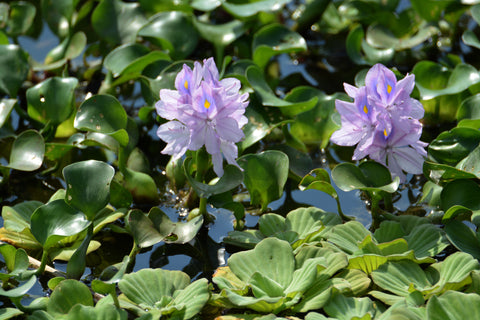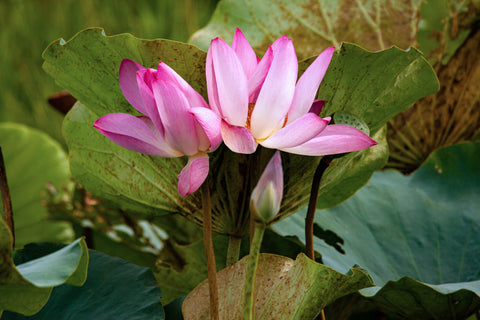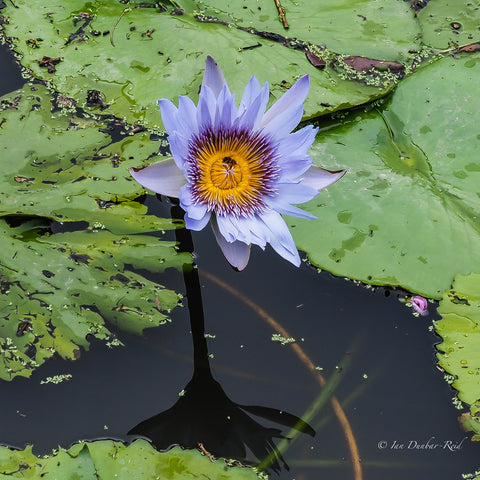
Floating Plants in India | Exploring Nature's Aquatic Wonders
Floating plants are a fascinating aspect of aquatic ecosystems, adding beauty and functionality to water bodies across India. From serene ponds to mighty rivers, these plants play crucial roles in balancing aquatic environments, providing habitat for wildlife, and enhancing water quality. In this comprehensive guide, we delve into the captivating world of floating plants found in India, exploring their diversity, ecological significance, and their role in sustainable aquatic landscaping.
Types of Floating Plants in India:
 1. Water Hyacinth (Eichhornia crassipes): One of the most notorious floating plants, water hyacinth is native to South America but widely distributed across India. Its rapid growth rate and ability to form dense mats make it a significant concern for water bodies, causing issues such as oxygen depletion and hindering navigation. However, it also provides habitat for various aquatic organisms.
1. Water Hyacinth (Eichhornia crassipes): One of the most notorious floating plants, water hyacinth is native to South America but widely distributed across India. Its rapid growth rate and ability to form dense mats make it a significant concern for water bodies, causing issues such as oxygen depletion and hindering navigation. However, it also provides habitat for various aquatic organisms.

2. Water Lettuce (Pistia stratiotes): Native to the Indian subcontinent, water lettuce is characterized by rosettes of pale green leaves. Despite its ornamental appeal, it can become invasive under favorable conditions, clogging waterways. Proper management is essential to prevent its unchecked spread.
3. Duckweed (Lemna spp.): Duckweed comprises several species of small, free-floating plants commonly found in Indian water bodies. These tiny plants reproduce rapidly, forming dense colonies that provide cover for fish and other aquatic organisms. While excessive growth can indicate nutrient pollution, controlled populations offer benefits in water remediation.

4. Lotus (Nelumbo nucifera): Revered for its cultural significance, the lotus is a floating plant found in India's ponds, lakes, and marshes. Its iconic blooms and large leaves make it a symbol of purity and enlightenment in various Indian traditions. Beyond its spiritual symbolism, lotus plants contribute to ecological balance by providing shelter for fish and invertebrates.

5. Water Lily (Nymphaea spp.): With their striking flowers and broad leaves, water lilies grace many of India's freshwater bodies. These plants are essential components of aquatic ecosystems, offering shade, shelter, and food for a range of aquatic fauna. Cultivars of water lilies are also popular in ornamental pond gardens.
Ecological Significance:
Floating plants play crucial ecological roles in India's aquatic ecosystems. They help regulate water temperature by providing shade, reducing the risk of overheating and excessive evaporation. Additionally, their extensive root systems absorb excess nutrients, such as nitrogen and phosphorus, thereby improving water quality and preventing algal blooms.
Moreover, floating plants provide habitat and food for diverse aquatic organisms, including fish, amphibians, insects, and birds. Their presence enhances biodiversity and supports the overall health of aquatic ecosystems. Furthermore, these plants aid in erosion control by stabilizing shorelines and mitigating the impact of wave action.
Sustainable Management and Conservation:
While floating plants offer numerous benefits, their uncontrolled proliferation can lead to ecological imbalances and environmental degradation. Therefore, sustainable management practices are essential to mitigate the negative impacts of invasive species and maintain healthy aquatic ecosystems.
In India, initiatives such as the restoration of wetlands and the promotion of native species cultivation are vital for conserving floating plant diversity. Furthermore, public awareness campaigns and community involvement play crucial roles in fostering responsible stewardship of water resources.
Resources and Further Reading:
For those interested in exploring floating plants and other aquatic flora, Kadiyam Nursery (kadiyamnursery.com) offers a wide range of indigenous species suitable for various water garden settings. Their expertise in aquatic landscaping and commitment to sustainable practices make them a trusted source for aquatic plant enthusiasts.
Additionally, for more in-depth information on aquatic ecology and conservation efforts in India, the following trusted websites provide valuable resources:
-
Central Pollution Control Board (CPCB): The CPCB's website offers insights into water quality monitoring, pollution control measures, and conservation initiatives aimed at preserving India's aquatic ecosystems.
-
Indian Council of Forestry Research and Education (ICFRE): As a premier research institution, ICFRE conducts studies on wetland ecology, biodiversity conservation, and sustainable management practices, contributing to the understanding and protection of India's natural resources.
-
National Institute of Hydrology (NIH): NIH's research and publications cover various aspects of hydrology, including the impact of land use changes, climate variability, and pollution on India's water bodies, providing valuable insights for policymakers and researchers alike.
In conclusion, floating plants enrich the tapestry of India's aquatic landscapes, serving as both aesthetic elements and vital components of ecosystem health. Through responsible management and conservation efforts, we can ensure their continued presence and contribute to the preservation of India's rich aquatic biodiversity.

Leave a comment